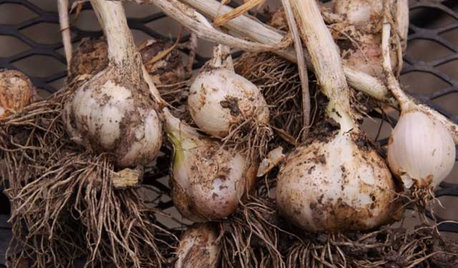a thrip preventative ???
Prettypetals_GA_7-8
15 years ago
Featured Answer
Sort by:Oldest
Comments (21)
Patty W. zone 5a Illinois
15 years agolast modified: 9 years agoRelated Discussions
Spider Mites -- everywhere!
Comments (41)Mandy, I wish I could help you - any pictures of the varmints? I came to this thread because I do have spider mites on many houseplants I bought in early winter from big box stores during distressed sales, and I've been fighting spider mites for the past few months. I'll be honest - they're all in a room where sometimes they are forgotten for a week or more at a time so they get dry and stressed, and the mites don't get noticed sometimes until they've gotten down and dirty. But when I have found them and use the spray I bought (can't recall the name, got it at WalMart, in a green bottle) really well and wipe the leaves down, it keeps them off for a while. Then they show up on another plant. I'm just tired of fighting the spider mites - already have enough on my plate (2 toddlers, I work, I'm not the best organized, and we got a bit flooded in the recent rains, so I'm in "purge" mode) and want to know your thoughts on my choices: First off, is there such a thing as a total cure, as in they're not coming back? Or will this be a constant battle now that they're here? I don't remember my mom ever having spider mites with her plants, but she didn't have a lot of plants either (maybe this is why). Can I give them a good treatment with the spray and offer them on freecycle to anybody who would want to try to rehab them (with full disclosure of what they might be taking in), or is that just giving the mites the opportunity to infect somebody else's stuff... and therefore I should just toss what I have in the trash and save everybody the trouble? I know I will be giving the heave-ho to some fancy ivies (two kinds of "King's Choice" and "Gold Baby" which I thought were pretty but look a little bit ratty now), two earth star plants (just had pups), a Janet Craig dracaena that is in very good shape, a Pilea (Moon Valley) that looks awful but not because of mites (I just don't know what to do with it - I think it needs pinching and re-rooting but I'm never good at that so it's got legs a mile long and a few leaves at the top), a couple of diffenbachia (no mites), and maybe some more if I can make myself let go of them (corn plant that has a lot of mites on it (getting treated tomorrow), couple of little dracaena marginata, another spotted dracaena I brought back from near death, and my three red sister ti's in a pot but I don't think I can give them up... yet. Thanks in advance for your input. Terri...See MoreUsing Predatory Mites for Broad, Cyclamen, Thrips and Mealybugs
Comments (7)I don't have experience with predatory bugs on my indoor plants, but we did use them in our yard for an incredible flea infestation. We moved into a house in late winter (February) and by April we couldn't walk outside without our feet and lower legs being speckled generously with fleas - it was icky on a level all it's own. We had pets and I was in the practice of systemically spot treating them, so I know they were not the source of the pestilence. I got some dry mix from the pet store "Beneficial Nematodes" which was mixed with water from the garden hose and sprayed around on the ground. It was like a miracle - within weeks, we had no more fleas at all. None. We lived in that place for ten years and never again had a problem. I even stopped treating my pets because we didn't have fleas in the yard - it was great!...See MoreThrips Infestation: What to do with container soil
Comments (2)Thank you for the reply Jean. I was able to verify it was thrips. By the time of your reply, I had already removed the plants due to construction needs. I have not yet replanted and am just now getting ready to do so. I still have soil in two containers. Reuse or toss?...See MoreHow do I prevent thrips from taking over my rose garden like they did
Comments (9)Hi there, I do not know what drench you could use. Spraying with Conserve has been the only true effective method of controlling thrips in my garden when I have them in large numbers. The best way to dealing with them organically is having a strong population of minute pirate bugs and lacewings but when it comes to chemicals Conserve works. Please note overuse may create resistance in the thrip population. I wish you good luck and hope you have many blooms to bring your wife this year. Also roses that open faster tend to show less thrips damage in my garden since the little monsters don’t get enough time inside the bud to destroy it. English roses show less damage here than the slower opening hybrid teas....See Moreroseman
15 years agolast modified: 9 years agolesdvs9
15 years agolast modified: 9 years agocarla17
15 years agolast modified: 9 years agoPatty W. zone 5a Illinois
15 years agolast modified: 9 years agoPrettypetals_GA_7-8
15 years agolast modified: 9 years agosusan9santabarbara
15 years agolast modified: 9 years agoTerry Crawford
15 years agolast modified: 9 years agoteka2rjleffel
15 years agolast modified: 9 years agogreen76thumb
15 years agolast modified: 9 years agoPrettypetals_GA_7-8
15 years agolast modified: 9 years agojaxondel
15 years agolast modified: 9 years agoTerry Crawford
15 years agolast modified: 9 years agobuford
15 years agolast modified: 9 years agoPrettypetals_GA_7-8
15 years agolast modified: 9 years agogreen76thumb
15 years agolast modified: 9 years agosuesette
15 years agolast modified: 9 years agogreen76thumb
15 years agolast modified: 9 years agobuford
15 years agolast modified: 9 years agogreen76thumb
15 years agolast modified: 9 years ago
Related Stories

COOL-SEASON CROPSCool-Season Vegetables: How to Grow Garlic
Beloved in a wide range of dishes the world over, garlic thrives in a fall garden and is easy to grow
Full Story
HOUSEPLANTSGet a Dash of the Rain Forest With Madagascar Dragon Tree
This living decoration reaches up to 15 feet, has minimal needs and adapts to different light levels — just steer clear of fluoride
Full Story
GARDENING GUIDES11 Favorite Edibles for Your Cool-Season Garden
Plant crunchy carrots, crisp radishes, tender peas and other vegetables for fall and spring harvests
Full Story





anntn6b